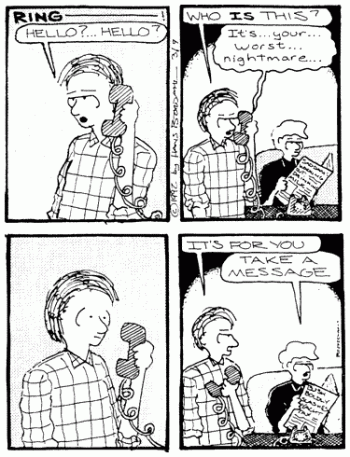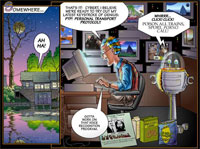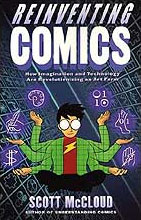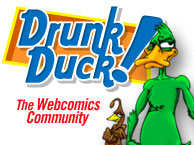|
|
 Tim Berners-Lee, creator of the world wide web |
Web comics are a relatively new addition to the world of sequential art, but in a short time they have grown into a movement that is helping to define the future of the medium. Like other types of entertainment, comics are adapting to the new economy. Today there are literally thousands of web comics and hundreds of sites devoted to displaying or discussing them. But it wasn’t always that way. A little over ten years ago, this new form of sequential art was just emerging from the primordial stew of the nascent Internet. What was the birth of web comics like? To answer that question, we need to journey back in time to the year 1992.
 Where the Buffalo Roam is known as the first web comic |
Popular wisdom states that the first web comic was “Where the Buffalo Roam,” created by a Colorado student named Hans Bjordahl. “Where the Buffalo Roam” was a comic strip that offered humorous insights into college life and in 1992, it was made available on the Internet through a Usenet newsgroup. Basically a text based “Bulletin Board,” Usenet newsgroups offered a way for people to share information about common interests. Although Usenet groups were all text based, one could provide links to downloadable image files. Where the Buffalo Roam is notable, not so much for the fact that it was the first comic of its kind, but because it developed a loyal following. That meant that there was an audience for web comics.
 Argon Zark has been publishing since 1995. It's known as the longest running web comic. |
 Reinventing Comics, by Scott McCloud, covered the emerging world of web commics. |
The next step in the evolution of web comics was the introduction of the hosting service. As web comic creators continued to multiply, sites offering hosting services began to appear. Most of these sites offered to host a web comic for either a small fee or a cut of any profits that a web comic generated. The most famous of the early web comic hosting services was Keenspace. Hosting services provided a home for web comics that included automatic updates as well as well as a place to sell related merchandise.
 |
Since their inception during the early days of the Internet, web comics have tended to be less rigid than their printed cousins. Early readers of web comics were much more tolerant of non-traditional content while the low cost of creating and publishing web comics allowed anyone to join the party. Like any new medium, web comics have created a forum for new voices and new creative visions. More importantly, web comics have carved out a growing niche in the world of sequential art that will be evolving continuously for the foreseeable future.
Before I close, I’d like to acknowledge a research debt to the amazing work of T Campbell. Campbell is a writer of web comics, an editor for the subscription web comic site Graphic Smash, and a regular contributor to comixpedia.com. For anyone interested in the history of web comics, he is currently writing a book on that very subject. You can learn more about T Campbell at http://tcampbell.net.
Next column, we’ll take a look at the business of web comics. Who is making money and how. Until then, click on over to one of the many web comic resources mentioned above and start read some web comics. You’ll be glad you did.
© Copyright 2002-2019 by Toon Doctor Inc. - All rights Reserved. All other texts, images, characters and trademarks are copyright their respective owners. Use of material in this document (including reproduction, modification, distribution, electronic transmission or republication) without prior written permission is strictly prohibited.

